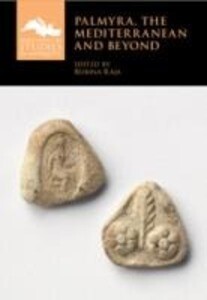
Zustellung: Sa, 13.09. - Mi, 17.09.
Noch nicht erschienen
VersandkostenfreiBestellen & in Filiale abholen:
Palmyra is one of the most famous sites of the ancient world and played a major role in the overland trade between the Mediterranean and the East. This volume explores fascinating aspects of Palmyrene archaeology and history that underline the site's dynamic relations with the Roman world, whilst simultaneously acknowledging its extremely local nature. The chapters explore Palmyra as a site, but also Palmyrene society both at home and abroad - as travellers in the then known world and contractors and businesspeople as well as innovative political and military leaders of their time. They illuminate Palmyra's and Palmyrene society's negotiations, struggles, benefits and disadvantages from being part of the Roman Empire, situated on the fringes between the East and the West, and their use of this location to recreate themselves as a central power player - at least for a time - within a rapidly changing world.
Inhaltsverzeichnis
1. Palmyra in the Mediterranean World Rubina Raja; 2. The Western Networks of Palmyra Eivind Heldaas Seland; 3. You Can't Get There from Here: Itineraries of the Palmyrenes in the Mediterranean Jean-Baptiste Yon; 4. Palmyrene Iconographic Traditions and the Mediterranean Connections: A Note on Some Signet Seal Impressions on the Palmyrene Tesserae Rubina Raja; 5. Palmyra and Emesa or 'Palmyre sans É mè se': Some Considerations on Palmyrene Trade Networks and the Mediterranean Leonardo Gregoratti; 6. Organizing Networks to Supply Mediterranean Markets Katia Schö rle; 7. Language, Law and Religion: The Palmyrene Tariff in Its Roman Context John F. Healey; 8. Channels of Communication and Connections of Style; Palmyrene Portraiture in Its Wider Context Maura K. Heyn; 9. Identity and Mobility of Palmyrene Jews Eleonora Cussini; 10. Palmyrene Military Expatriation and Its Religious Transfer at Roman Dura-Europos, Dacia and Numidia Nathanael Andrade.
Produktdetails
Erscheinungsdatum
31. August 2025
Sprache
englisch
Seitenanzahl
300
Herausgegeben von
Rubina Raja
Verlag/Hersteller
Produktart
gebunden
ISBN
9781009532082
Entdecken Sie mehr
Bewertungen
0 Bewertungen
Es wurden noch keine Bewertungen abgegeben. Schreiben Sie die erste Bewertung zu "Palmyra, the Mediterranean and Beyond" und helfen Sie damit anderen bei der Kaufentscheidung.









